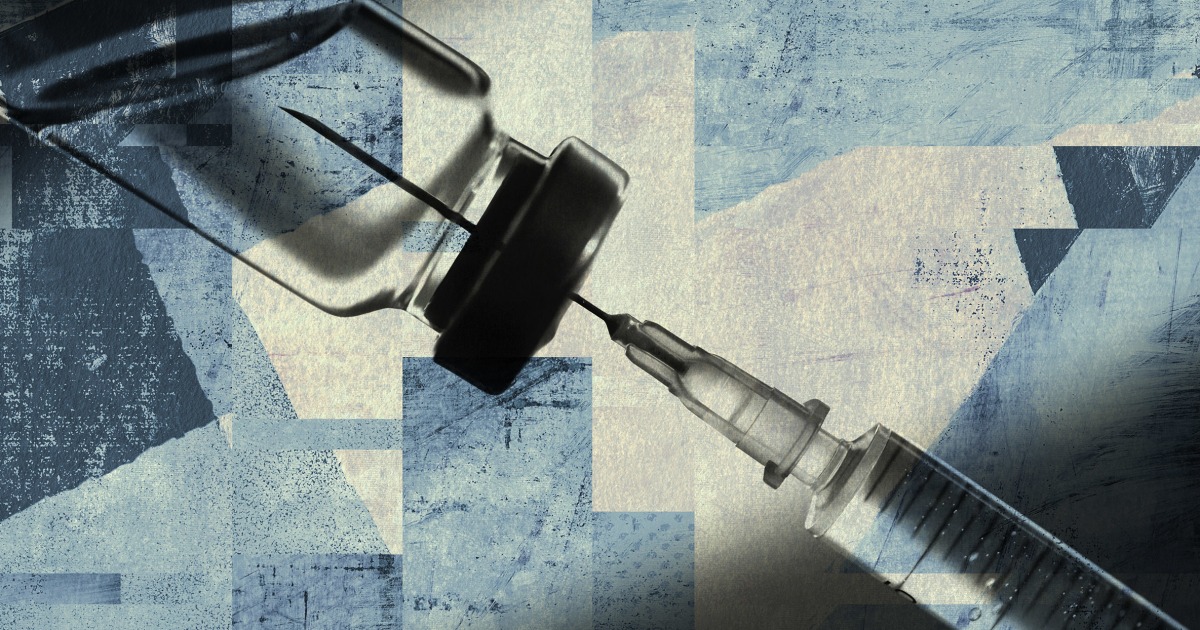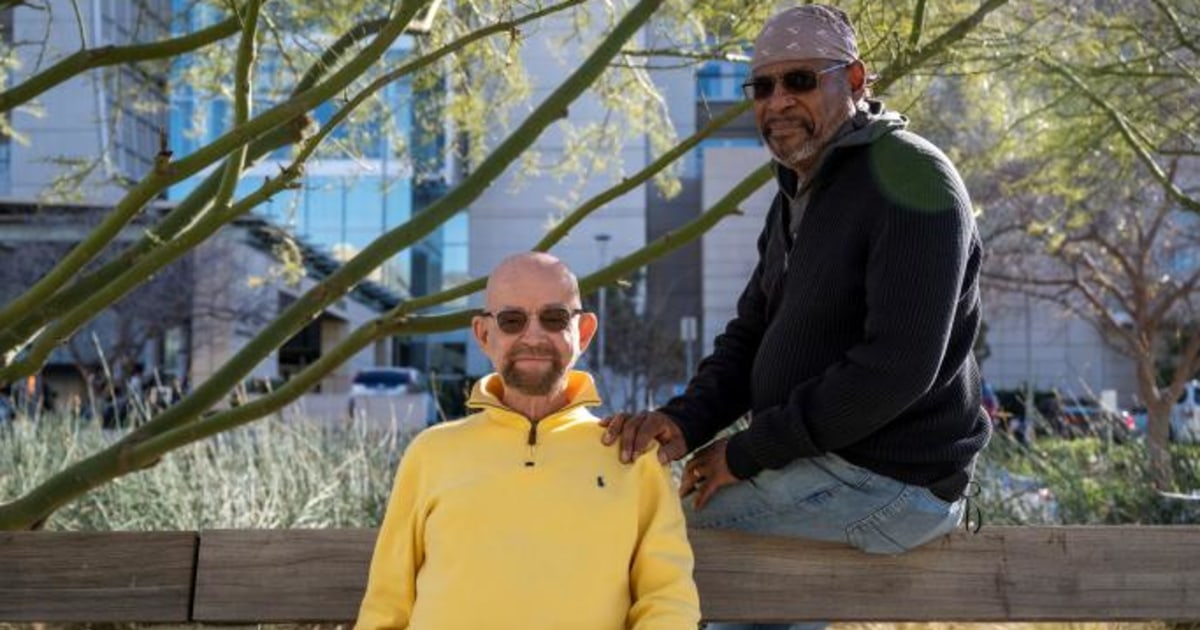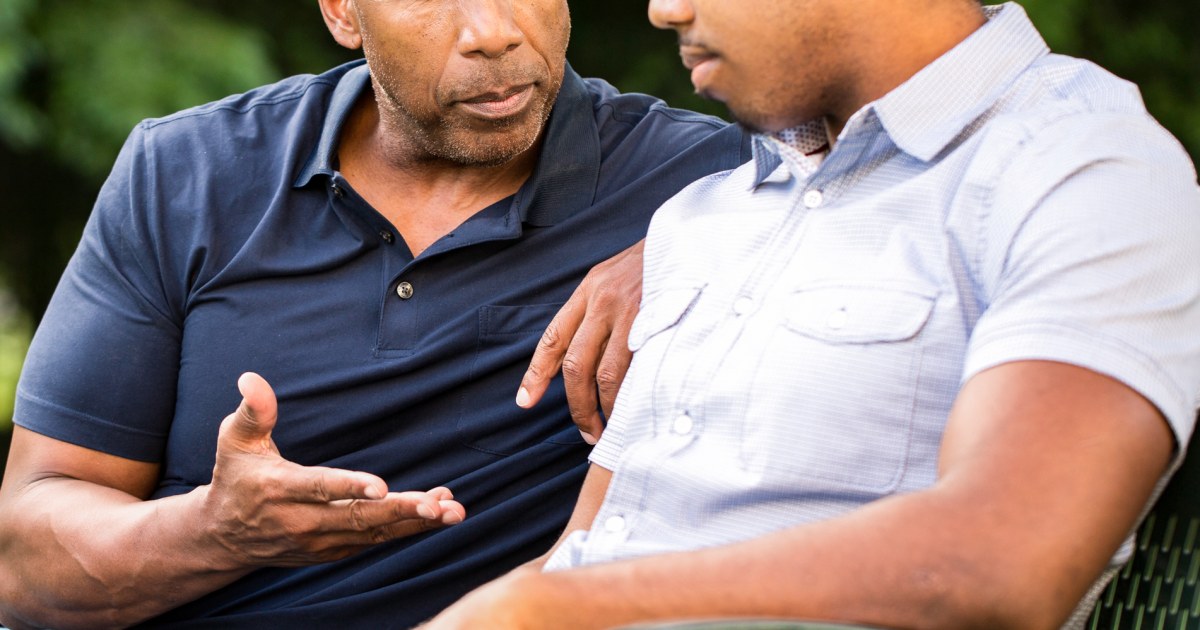Note to readers:
EL PAÍS offers openly the Future Planet section dedicated to reporting on the progress of developing countries, the 2030 Agenda and the eradication of poverty and global inequality.
If you want to support our journalism,
subscribe here.
Marina learned that she was HIV positive at age 11.
It was her adoptive mother who told her and her three other siblings that they had all lived with the human immunodeficiency virus (HIV) since birth.
Their biological mothers had passed it on to them at birth.
"When she told us, we didn't understand it, we didn't know what it meant to have it," this young Russian woman born in Kazan, a city of just over a million and a half inhabitants on the banks of the Volga, explains over the phone after school.
Her mother, who adopted her at the age of four, realized that neither she nor her other children could live without the necessary information, in addition to her antiretroviral treatment, to deal with a chronic disease like this, surrounded by taboos and stigma.
"My closest friends know it, I told them myself, but we don't talk about it," says the young woman.
But Marina does not feel alone or little listened to.
To talk about you to you, she has Svetlana Izambaeva, a doctor, also HIV-positive, who works as a counselor at
Все просто
(Everything is Simple, in Spanish), a foundation that provides psychological support and accompanies adolescents who are carriers of the AIDS virus.
"The best lesson, in addition to teaching me that I can lead a normal life, is that I should not be afraid, that I do not fear my future," says the adolescent, fond of photography and who wants to be a psychologist when she grows up.
Early diagnosis and the use of antiretrovirals, the two great battles against HIV in childhood
Children with HIV receive second-class care
Tribune: Born and raised with HIV
Marina and her three other siblings are part of the list of 1.7 million children between the ages of 10 and 19 living with HIV around the world.
In 2019, 170,000 more were infected, of which 140,000 are women, data that also comes in a year in which many of the treatments to combat this other epidemic have been interrupted by the covid-19, according to UNICEF alert in its report
Reimagining a resilient response for children, adolescents and pregnant women living with HIV / AIDS
, released in the wake of World AIDS Day.
As with other diseases, the disparity between rich and poor countries is also evident in the numbers of infected.
New HIV infections among adolescents in sub-Saharan Africa represent 83% of the global, according to the same Unicef study.
West and Central Africa is home to one of the fastest growing populations of adolescents in the world and, if the current trend continues over the next decade, the number of new cases in this age group will not decline fast enough to end the disease. AIDS as a health threat in 2050.
West and Central Africa is home to one of the fastest growing adolescent populations in the world, and if current trends continue over the next decade, the number of new infections will not decline to end AIDS as a health threat by 2050
Another worrying fact that this same UNICEF study shows is that in sub-Saharan Africa, three out of every four new infections among young people between the ages of 15 and 19 are among girls.
The closure of classrooms due to the pandemic is yet another factor that has added to the fragility in which many young women at risk already live.
“We have to make sure we have safe spaces for them.
We work with communities so that their problems matter to them.
Furthermore, we know that keeping them in school and finishing secondary education protects them against HIV, ”contextualizes Chewe Luo, Associate Director and Head of HIV / AIDS at UNICEF.
The expert also points out that the environments of violence and repression in which many women live, especially in the poorest and most vulnerable environments, child marriage and the lack of freedom when deciding on their sexual life and prevention methods, It has caused the number of infections to skyrocket among the female gender.
“It is essential that sex education comes through the school.
In this way, adolescents will come out of it with the appropriate knowledge, whether they are boys or girls.
We have evidence that when a good comprehensive education is followed, it not only helps knowledge, but also changes behaviors ”, adds Luo.
A club where you can talk, learn and feel safe
One of the initiatives that has come to make up for this lack of sexual education and a safe space for HIV-positive adolescents, away from adults, but also from the stigmas, taboos and discrimination that society exerts on them, are the clubs of adolescents that Doctors Without Borders (MSF) has launched in Malawi.
The African country is
one of those with one of the highest HIV prevalence rates in the world: approximately one in 10 people is HIV-positive, according to figures from the organization.
Chilungamo is now a young man in his 20s, but when he found out he was HIV positive he was 12. He is the mentor of many teenagers that how he found out that they were carriers of the virus in their teens.
Every Saturday in Chiradzulu (Malawi), more than a hundred young people meet to speak, learn and share experiences about the disease.
“When I was among the elderly, I didn't feel comfortable.
I was ashamed and lonely.
[...] I believed that the end of my life had come, that I would die and it was over, ”he explained to the MSF team.
“Many of them tell us that they feel better interacting with friends who also have HIV, that they don't feel alone.
If other people his age see and talk, who are undergoing treatment and are well, they become his role models ”, he is happy
Tariro Tizifa Mwafulirwa.
The project, which served 9,200 adolescents in 2019, suffered a stoppage due to the pandemic from April to September, but has resumed its activities, including film screenings, playing soccer or having one-on-one talks among young people and mentors.
If other people their age, who are undergoing treatment and who are well see and talk, they become their role models
Tariro Tizifa Mwafulirwa, Head of MSF Teen Clubs
For its part, Doctors of the World in Senegal has been working on HIV prevention and awareness for more than 10 years in the country.
Their actions are carried out on the street, in schools, but also with youth associations and in the meeting rooms of health centers in neighborhoods such as Pikine or Keur Massar, in Dakar.
In this last area of the capital, the organization has built a center that will be a meeting place for young people and adolescents and which was inaugurated this past December 9.
This is where the adolescent sexual and reproductive health awareness activities will take place.
“We rely a lot on Senegalese civil society networks.
And the positive thing that this building or meeting place is next to the health centers is to be able to better link the health personnel with the young people ", explains by phone Guillermo Martínez, head of the NGO in Senegal, who admits that mechanisms are lacking so that the people are informed and make decisions about their sexual health.
“At home, they don't talk about sexuality, sexually transmitted diseases or HIV, and very little in schools.
What remains for us ?: Informal media such as social networks, but for that we must have a telephone or a means that allows us to access them.
And not all the information there is reliable.
So we see that the best option is to prepare young leaders and for them to be the ones to train others, "adds Martínez, who explains that these mentors are independent from deciding what they plan their talks about, to which they usually invite the head nurse of the annex health post.
"That is why the proximity of these two buildings is important," he says in reference to the meeting centers.
Disinformation perpetuates stigma and blame
Experts consider that the lack of information is the first barrier encountered when it comes to preventing HIV among adolescents.
“The problem is that they do not have a regulated sexual education, nobody talks to them about HIV, or what this disease is, or how it is transmitted.
If you do not have information, it is very difficult for you to prevent infections, "says José Antonio Pérez Molina, infectious disease doctor at the Ramón y Cajal Hospital, and member of Seisida and member of the AIDS Study Group-Seimc (Gesida).
The Cesida, Gesida and Seisida associations launched their #YONOMEOLVIDO initiative again, to remember that HIV continues to exist, and that people with the virus cannot be left unattended and no one should be left behind.
"Adolescence is a very difficult stage for people with HIV because they have to take the step that goes from being a child to an adult, changing doctors ... And at a time in life when the stigma that AIDS still has is shows more violently.
They themselves rebel a lot against their own disease.
They are adolescents to whom you have to add a chronic illness ”, admits Pérez Molina.
Experts also agree that around sexual health, and especially among adolescents, a degree of guilt is generated in patients.
"We know that adolescents prefer self-testing as a method to find out their HIV status, to avoid going to clinics where they feel judged," says Chewe Luo.
The UNICEF expert explains that one of the challenges she faces in her HIV and adolescents project on the African continent is how to get the information to them, usually through SMS and social media, so that they know where they can access it. tests and get a diagnosis.
"An adolescent is very vulnerable to criticism, to rejection, with which many times they hide it, they do not want to transmit it, which leads to very high levels of depression and suicides," adds Michel Alpizar López, a health psychologist and worker at Salud entre Culturas, an organization that has launched the # VIHsibilidad2020 initiative, which aims to make the virus visible from an intercultural perspective.
"For many African people, treating HIV is synonymous with death," explains the psychologist.
This misinformation, which also leads young people to think about it, is a widespread evil in today's society and causes the sick to receive double punishment.
Dr. Pérez Molina believes so.
“The patients tell you, they receive a double punishment.
Anyone can say: I have had a heart attack.
And no one will feel bad.
But even today no one goes around saying that they have HIV.
And you don't usually say it, because if you say it you know that you will receive rejection.
And it is a reaction that stems from profound ignorance, because if you know that a person with HIV is properly treated, you know that they do not transmit the disease. "
FUTURE PLANET can follow on
,
and
, and subscribe
here
to our 'newsletter'
.







/cloudfront-eu-central-1.images.arcpublishing.com/prisa/5CLYTLCI4JEMPPBIJCPSN2TOPY.jpg)

